Many gardeners consider grapes to be a capricious and demanding plant, and its cultivation — a labour-intensive task. In reality, with proper care, growing grapes does not require excessive effort. In this article, we will explore how to care for grapevines, what and when to feed them during the summer season.
Table of contents
Features of Summer Grape Fertilisation
In summer, grapes are in the active growth and fruit formation stage. However, by this time, most nutrients have already been depleted from the soil, so the vines require high-quality feeding.
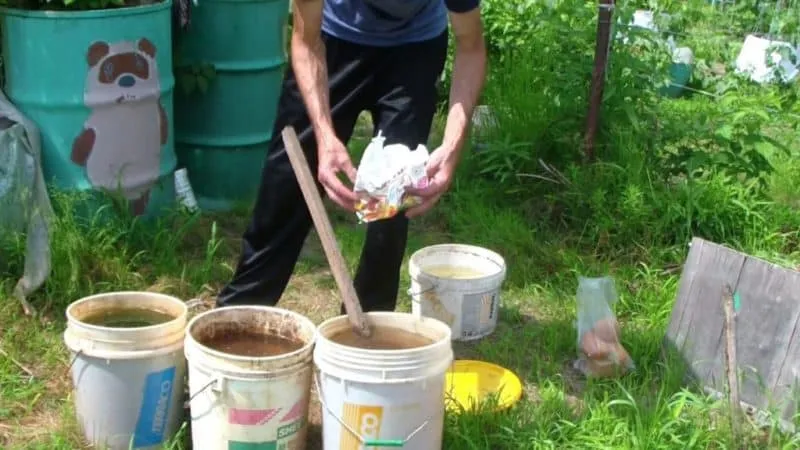
What the Plant Needs in Summer
To achieve a bountiful harvest of large, sweet berries, it is essential to provide the grapevine with a full range of nutrients.
Proper grape development is impossible without the following micronutrients:
- Phosphorus is crucial during flowering for ovary formation;
- Zinc positively affects yield;
- Nitrogen supports the growth of new shoots and leaves;
- Copper helps withstand drought and frost;
- Potassium accelerates berry ripening.
If grapes are grown in acidic soils, the amount of calcium in the fertiliser should be increased. Conversely, if the soil has excess nitrogen, previously applied potassium and phosphorus may not be absorbed properly.
How to Identify Nutrient Deficiencies
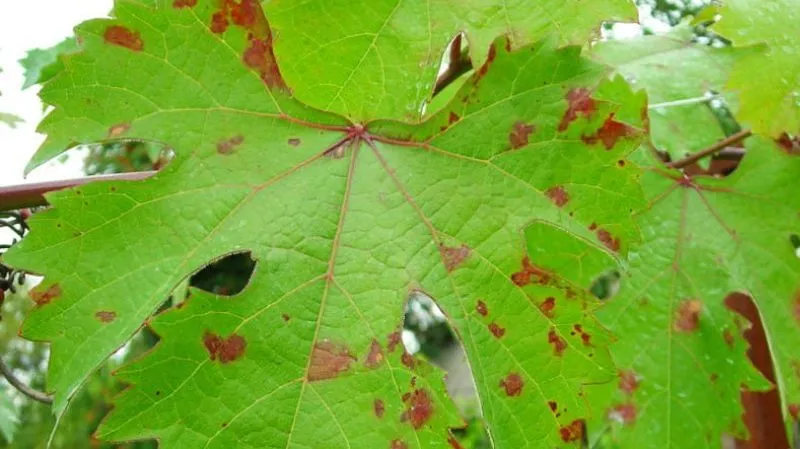
Experienced gardeners can easily detect nutrient deficiencies by observing the vine's appearance and growth:
- Nitrogen deficiency leads to stunted shoot and cluster growth, reducing their overall number;
- Yellowing leaves that curl and fall, along with dying growth tips (especially in mature vines), indicate calcium deficiency;
- Iron deficiency causes chlorosis, which also signals a general mineral imbalance in the soil;
- Darkened, curled, or upward-bent leaves, loose clusters, and berry drop suggest phosphorus deficiency, preventing starch from converting into sugar in the foliage;
- Magnesium deficiency turns leaves pale yellow with dark spots between veins;
- Yellowing foliage may also result from molybdenum deficiency, common in acidic soils;
- Alkaline soils often lack manganese or boron — in such cases, fertilisation should address both elements simultaneously.
Excess nitrogen can be as harmful as its deficiency, causing excessive vine growth. This reduces berry quality, increases nitrate accumulation, and weakens the plant's resistance to environmental stress.
How to Fertilise Grapes in Summer
For a good harvest, grapes should be fertilised from early spring until autumn. In summer, both mineral and organic fertilisers are recommended, as they enhance berry growth, yield, and flavour.
Mineral Fertilisers
Grapes require mineral fertilisers at different stages, depending on the nutrients. Nitrogen-based fertilisers should be applied regularly throughout summer, while phosphorus is added twice: before flowering and after fruit set.
Potassium is applied two weeks before harvest, when soil depletion increases the vine's demand for this nutrient.
Fertilisers should be applied at the depth of the absorbing roots, as micronutrients do not move independently through soil layers.
Important! Although urea is a popular nitrogen fertiliser for grapes, remember that it raises soil pH, making it unsuitable for alkaline or acidic soils.
Organic Fertilisers
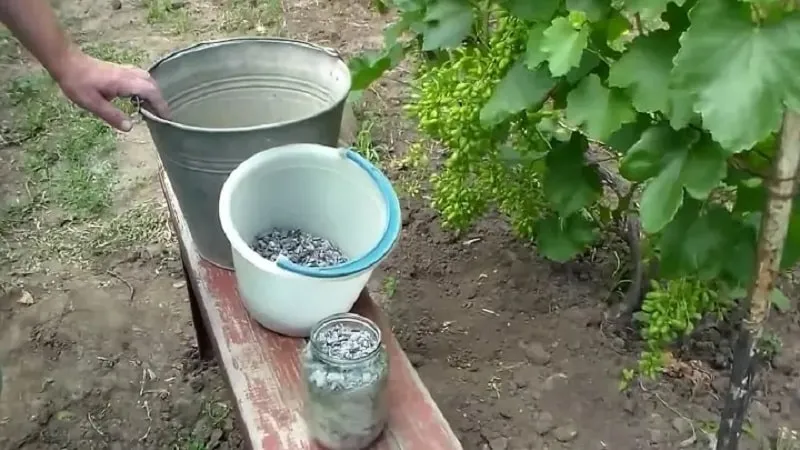
Cattle and horse manure are ideal for grape fertilisation. They provide essential nutrients, improve soil structure, enhance aeration, and increase looseness.
Many experienced growers prefer organic fertilisers, with sunflower ash being a top choice — it contains 40% potassium and 4% phosphorus. A fertiliser solution is made by mixing 1 litre of ash with 5 litres of water, left to infuse for a day (stirred occasionally). Before application, dilute the mixture with 5–6 litres of water.
During berry ripening, a mix of ash (1 cup) and superphosphate (50 g) dissolved in 10 litres of water can be applied to the root zone.
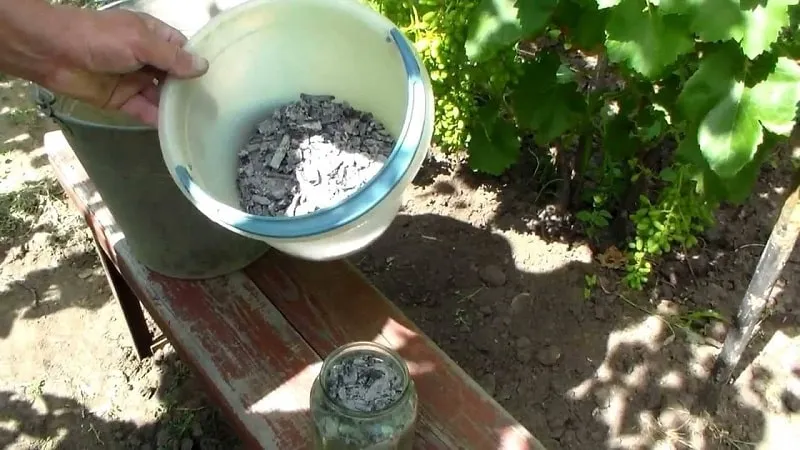
Important! Ash not only nourishes grapes but also protects them from pests.
Home Remedies
Liquid chicken manure is a widely used homemade fertiliser. Soak 1 litre of dry manure in 5 litres of water for 10 days. Before use, dilute the solution (1 litre per 10 litres of water).
In summer, grapevines can be watered with a solution of compost or well-rotted manure. Apply it around the vine, 30 cm from the base.
Important! Grapes respond better to organic fertilisers because their roots absorb nutrients directly, rather than through the soil.
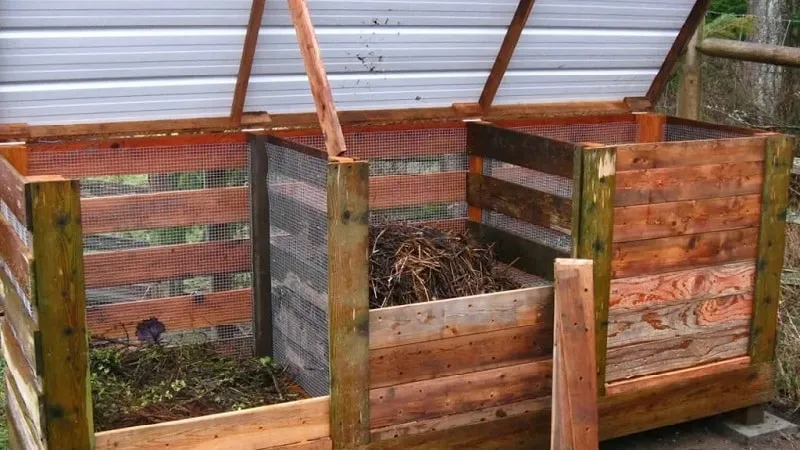
Frequency and Dosage of Fertilisation
Nutrient deficiency can be as harmful as excess. Therefore, it is crucial to follow specific schedules for fertiliser application.
Possible Fertilisation Schemes
Several standard schemes exist for summer grape watering and fertilisation. Typically, 3–4 procedures are combined with irrigation.
How and what to feed grapes:
- Apply 20 kg of manure, 200–250 g of urea, superphosphate, potassium chloride, and 300 g of ash into a shallow trench (up to 7 cm deep), then water with 30 litres of rainwater.
- A second application is done in mid-June, during fruit set.
- A third fertilisation occurs in late July, reducing organic fertilisers by two-thirds and omitting urea.
An alternative approach aligns fertilisation with growth phases:
- After dry tying, water and apply ammonium nitrate (60–80 g per vine).
- During shoot growth, water and apply monoammonium phosphate (60 g per vine).
- Before flowering, spray leaves with a 0.1% boric acid solution.
- During berry ripening, apply 200 ml of superphosphate, potassium sulphate, and ash, followed by watering.
How to Fertilise Grapes Correctly
The fertilisation method depends on the nutrients used and the plant's growth stage.
Fertiliser Application Methods
Root and foliar feeding are the two main approaches. For root feeding, install drainage pipes or an underground drip system to deliver nutrients directly to the roots. Alternatively, dig a narrow trench (25–30 cm deep, 50–60 cm from the vine) for fertiliser application.
Important! Root feeding is most effective when combined with watering.
Foliar feeding is also efficient, as grape leaves absorb nutrients well. Combined with root feeding, it yields excellent results.
Spray leaves on cloudy, windless days to prevent rapid evaporation. Ensure even coverage with fine droplets.
Step-by-Step Instructions for Each Method
Root feeding follows this scheme:
- At bud swelling, dissolve 90 g urea, 60 g superphosphate, and 30 g potassium sulphate separately, then mix and dilute to 40 litres. Nitrogen fertilisers can be replaced with a 10% cow manure or 5% poultry manure solution.
- Before flowering, apply 120 g ammonium nitrate, 160 g superphosphate, and 80 g potassium sulphate.
- In regions with short summers, a third application (60 g superphosphate, 30 g potassium sulphate, and micronutrient solutions like "Aquarin" or "Planetfol") speeds up ripening and prepares vines for winter.
An alternative four-stage root feeding plan:
- In early spring, apply a solution of 10 litres water, 20 g superphosphate, 10 g ammonium nitrate, and 5 g potassium salt per vine.
- Repeat two weeks before flowering.
- After fruit set, use potassium and phosphorus fertilisers (no nitrogen).
- During harvest, apply potassium-based fertilisers to improve winter hardiness.
For liquid manure, use 1 kg per square metre.
Foliar feeding schedule:
- Before flowering, spray with a solution of 40 g urea, 100 g superphosphate, 50 g potassium sulphate, and 5 g boric acid (dissolved separately, then mixed and diluted to 10 litres). Filter before use.
- Repeat after flowering, optionally adding micronutrient solutions.
- At berry ripening, apply a mix of 100 g superphosphate and 50 g potassium sulphate in 10 litres water.
- A fourth spray (using natural substances like wood ash, diluted whey, or herbal infusions) protects against pests and diseases.
Adding 3 tbsp sugar improves absorption.

Common Mistakes to Avoid
Frequent grape-growing errors include:
- Surface fertiliser application. This is ineffective, as nitrogen evaporates, and potassium/phosphorus fail to reach the roots.
- Over-fertilisation. This weakens the plant, delaying harvest.
- Only feeding young vines. If planted correctly, grapes need no fertiliser for two years. Mature vines, however, require seasonal feeding for abundant fruiting.
Tips from Experienced Growers
Seasoned gardeners prefer foliar feeding, as nutrient absorption is nearly double that of root feeding. This reduces fertiliser use and accelerates physiological processes.
In late September, remove weeds around the vine and add compost or well-rotted manure. Its bacteria break down organic matter, reducing future fertiliser needs.
Regularly treat roots with manure, ash, ammonium sulphate, and superphosphate. On sandy soils, do this annually; on loamy soils, every two years; on other types, every three years.
Conclusion
The belief that growing grapes for a good harvest is difficult is mistaken. In fact, grapes are a hardy crop that can thrive even in suboptimal conditions.
By following a proper fertilisation schedule, even beginners can enjoy a plentiful harvest of ripe, juicy berries.







